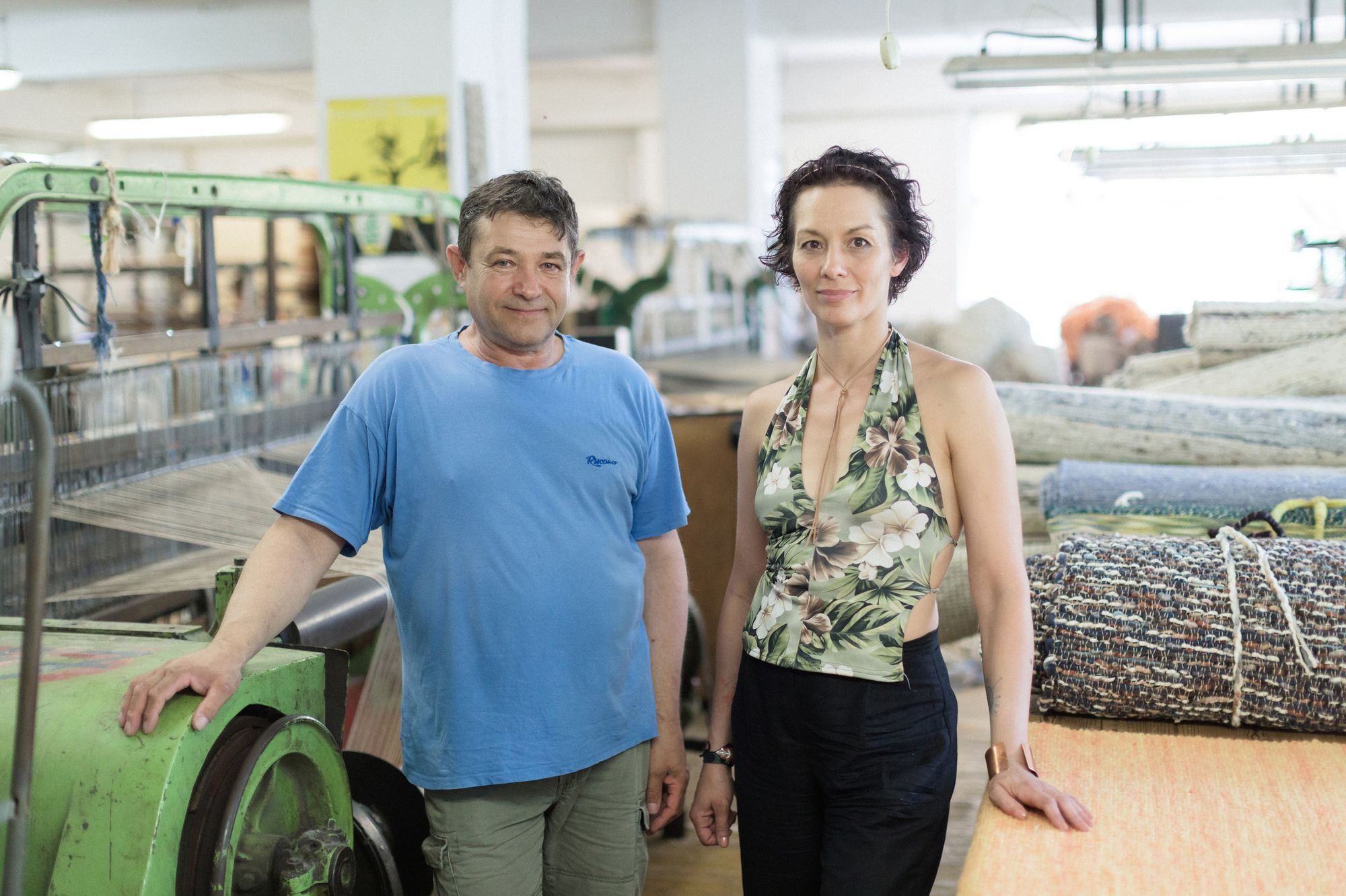There is a place in one of the quiet streets of Dévaványa, Békés County, where carpet weaving machines have been running for seventy years: Ferenc Papp’s manufactory makes wonderful home textiles, including the wool carpets of the Hannabi brand, known for its customizable sofas. Let’s check it out!
After two and a half hours of traveling, a little worn out, we get out of the car in Dévaványa: we are in front of Eötvös Street 14. A sign on the front of the building tells us that we have arrived at the right place. A carpet-weaving factory has been operating here since 1951: previously, work was carried out in the main building with its high ceilings at the front of the street, but for some years now, weaving machines have been clacking in the outbuildings in the yard, and wool yarns are piled up in garage-like storehouses, waiting to eventually be turned into carpets.
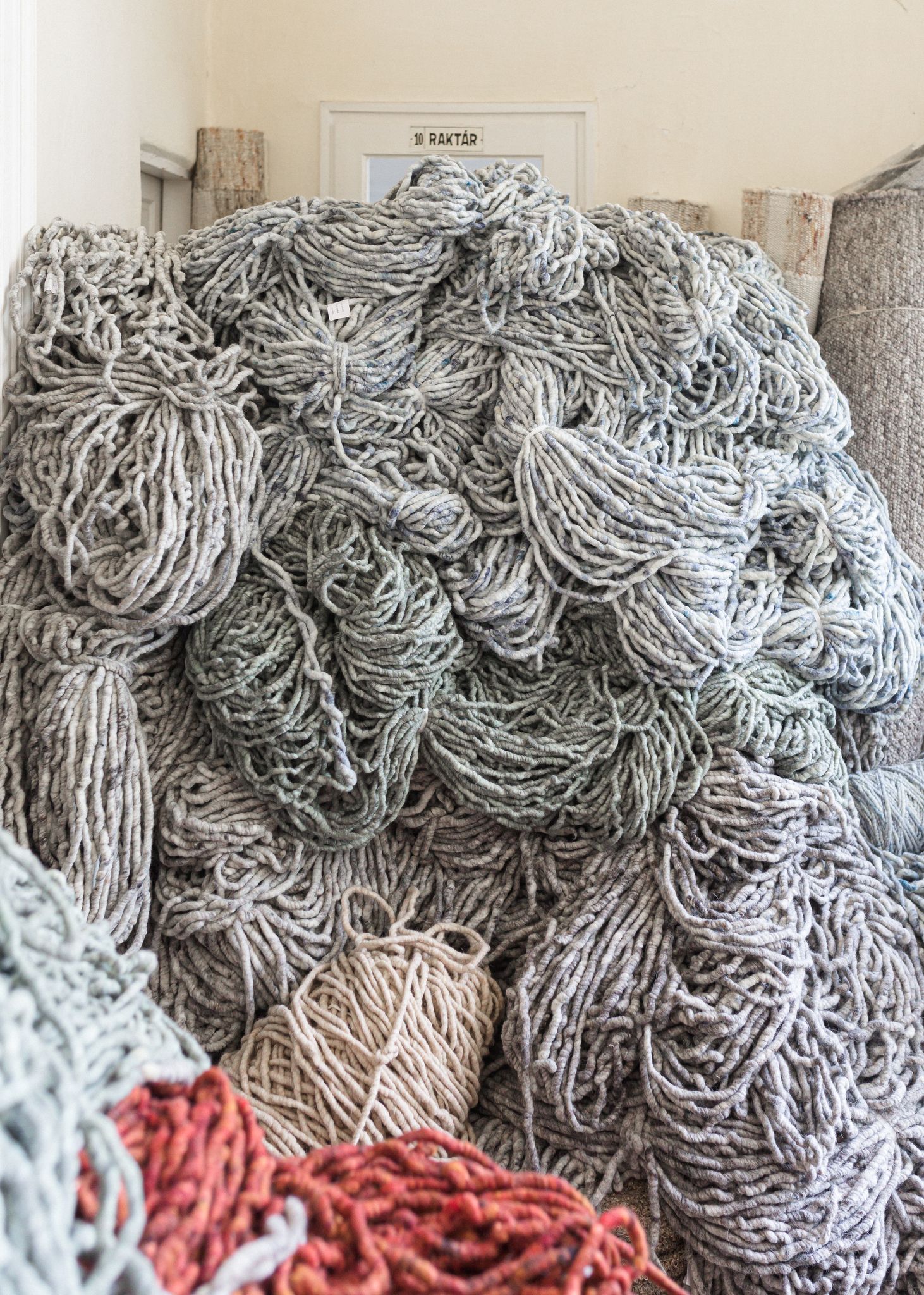
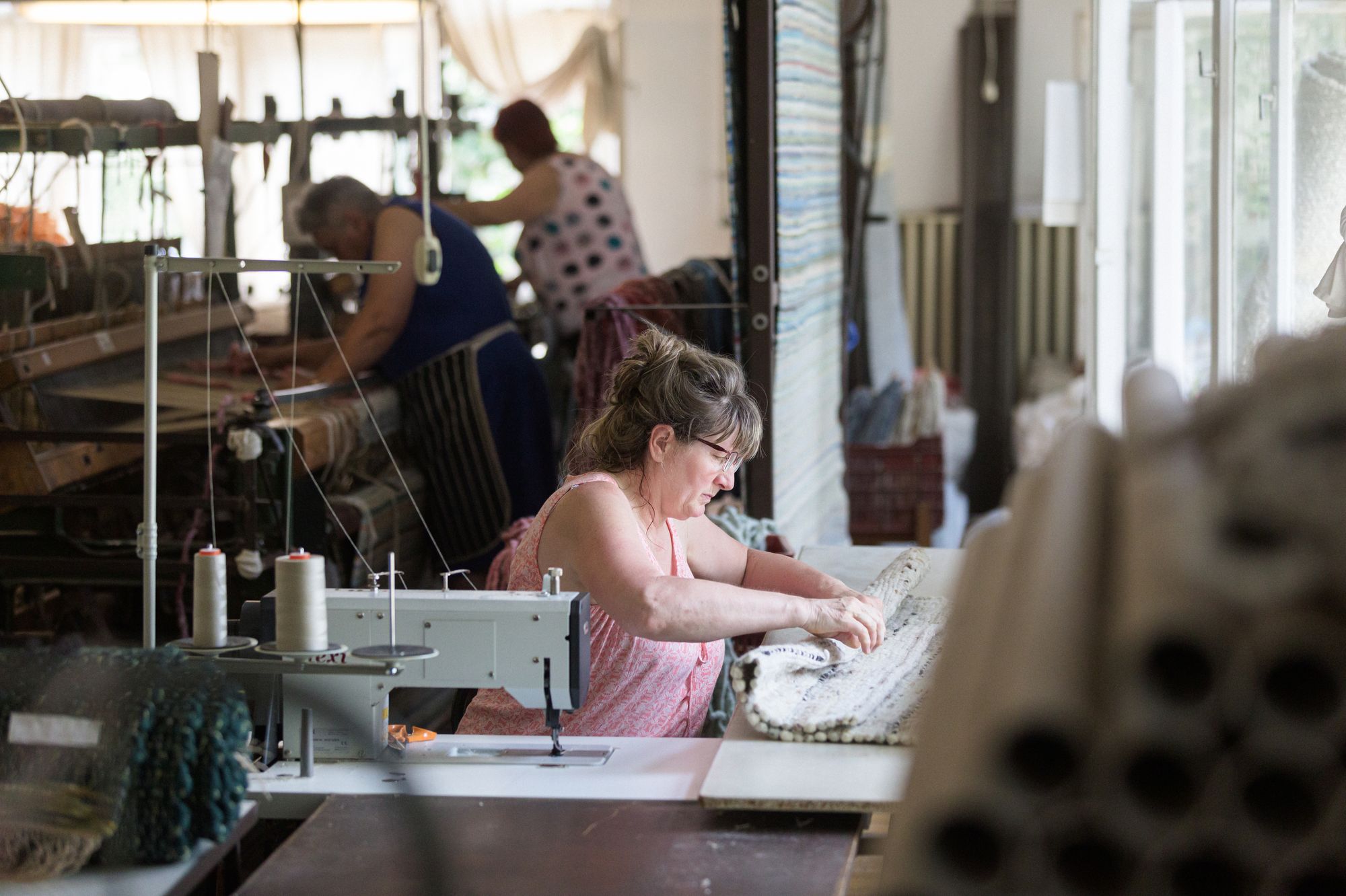
It feels as if we have arrived not in a factory but in the home of a rural family: a little further in, there are chickens scrabbling around the woodshed, a few rabbits in the hutch, and the trees between the buildings are teeming with fruit. Perhaps the only tell-tale sign is the many bicycles leaning against the walls of the house, patiently waiting for the afternoon shift to end. “The people who work here can eat as much as they want,” our host, Ferenc Papp, the managing director of Csaba Szőnyeg Kft., points smilingly to a peach tree as he shows us around the courtyard. On the plot of land, there is also a neat farmhouse where Feri and his wife Mária live. To be more precise, it is their second home, as they are from Debrecen, but to make the commute less tiring and to make the work at the factory go more smoothly, they have moved into this one too. But how did the story of Csaba Szőnyeg begin?

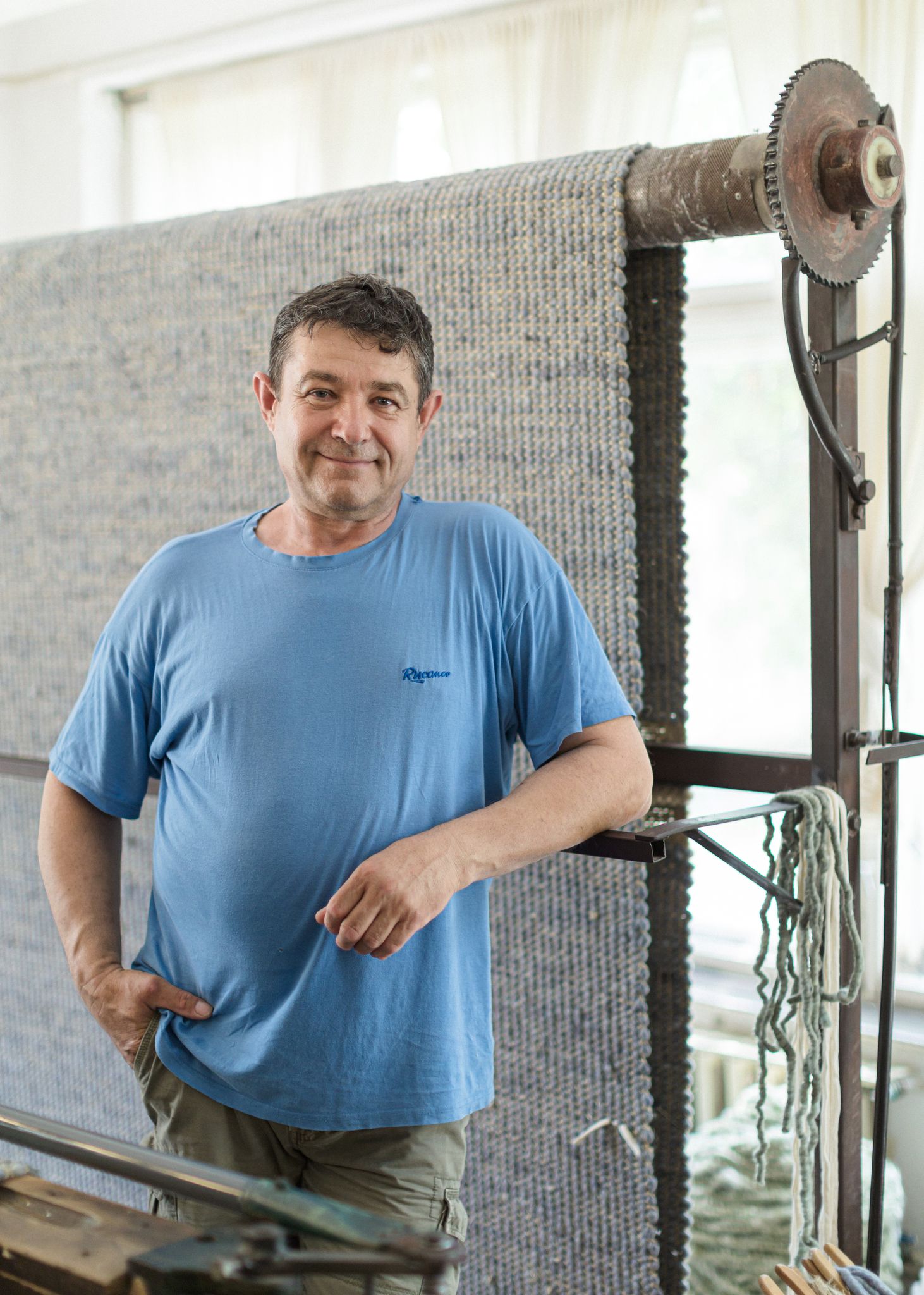
The Csaba Carpet Weaving Cottage Industry Cooperative, established in the 1950s, had its headquarters in Békéscsaba, then the Mezőberény branch was established, but it also set up branches in several other settlements in the Great Plain, including Gyula, Újkígyó, Füzesgyarmat, and Dévaványa. Due to the mechanization of agriculture, many rural women had to look for new jobs, and weaving mills proved to be the ideal place for them. The Dévaványa workshop provided a living for nearly a hundred workers at the time.

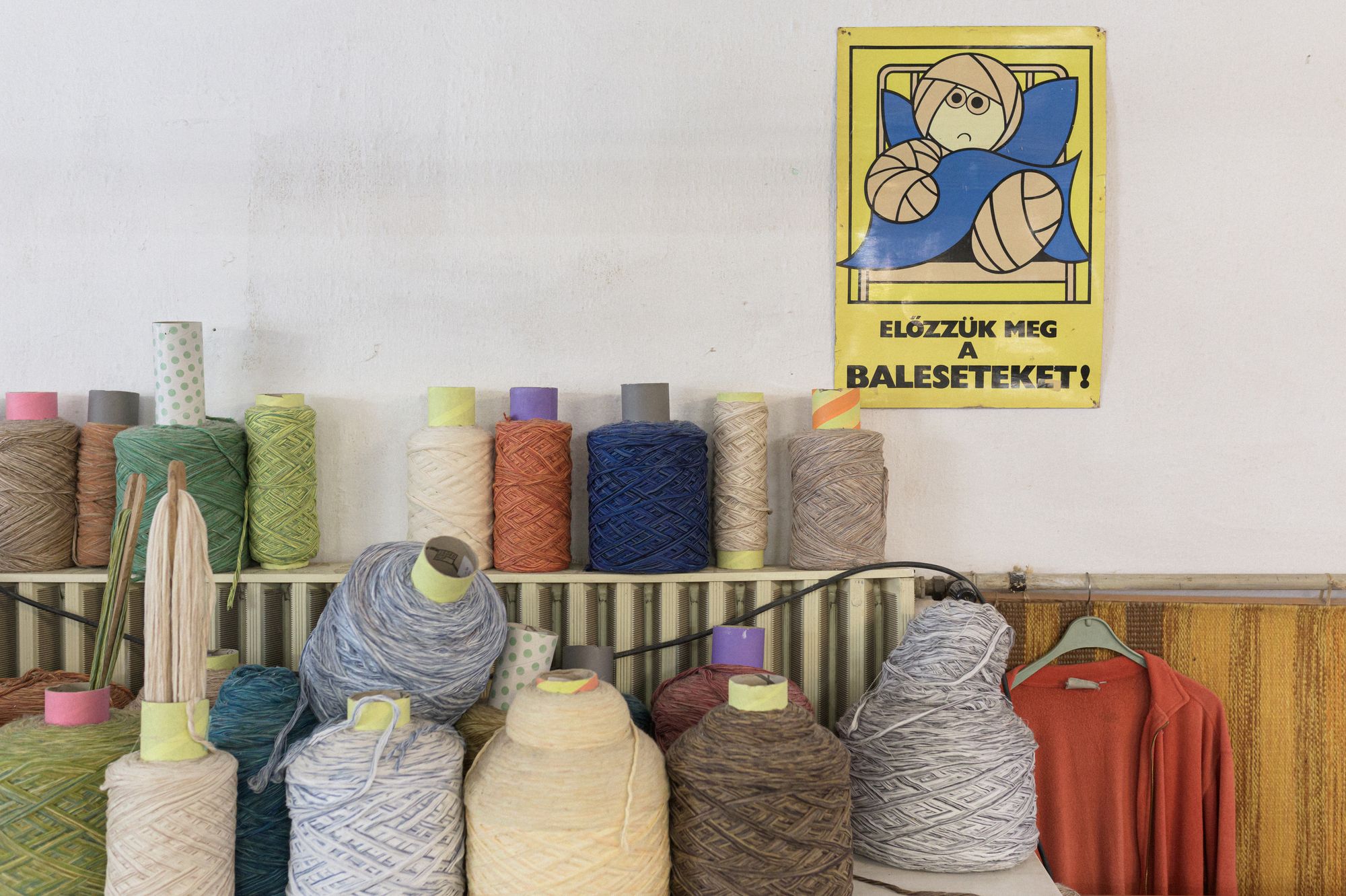
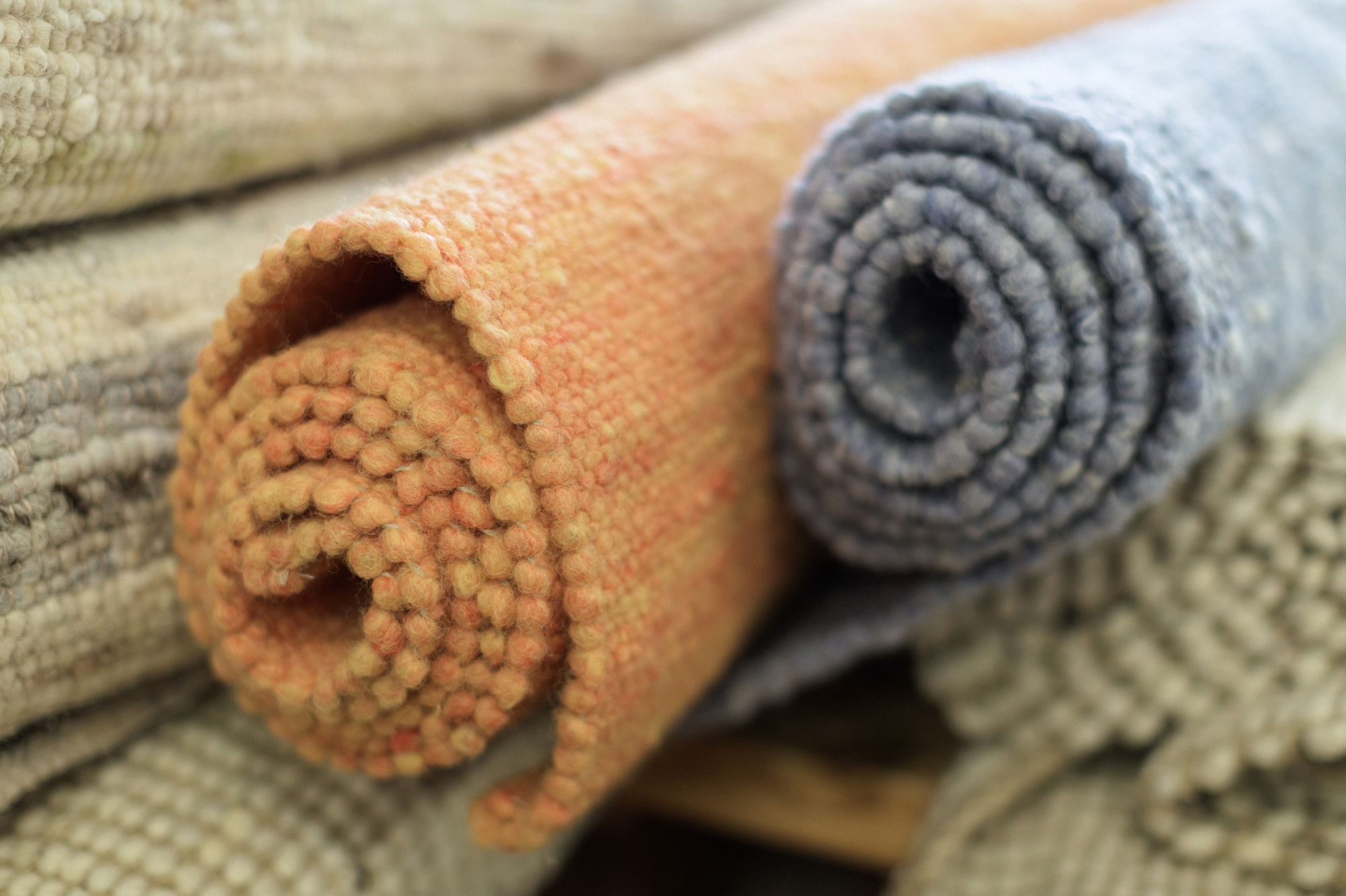
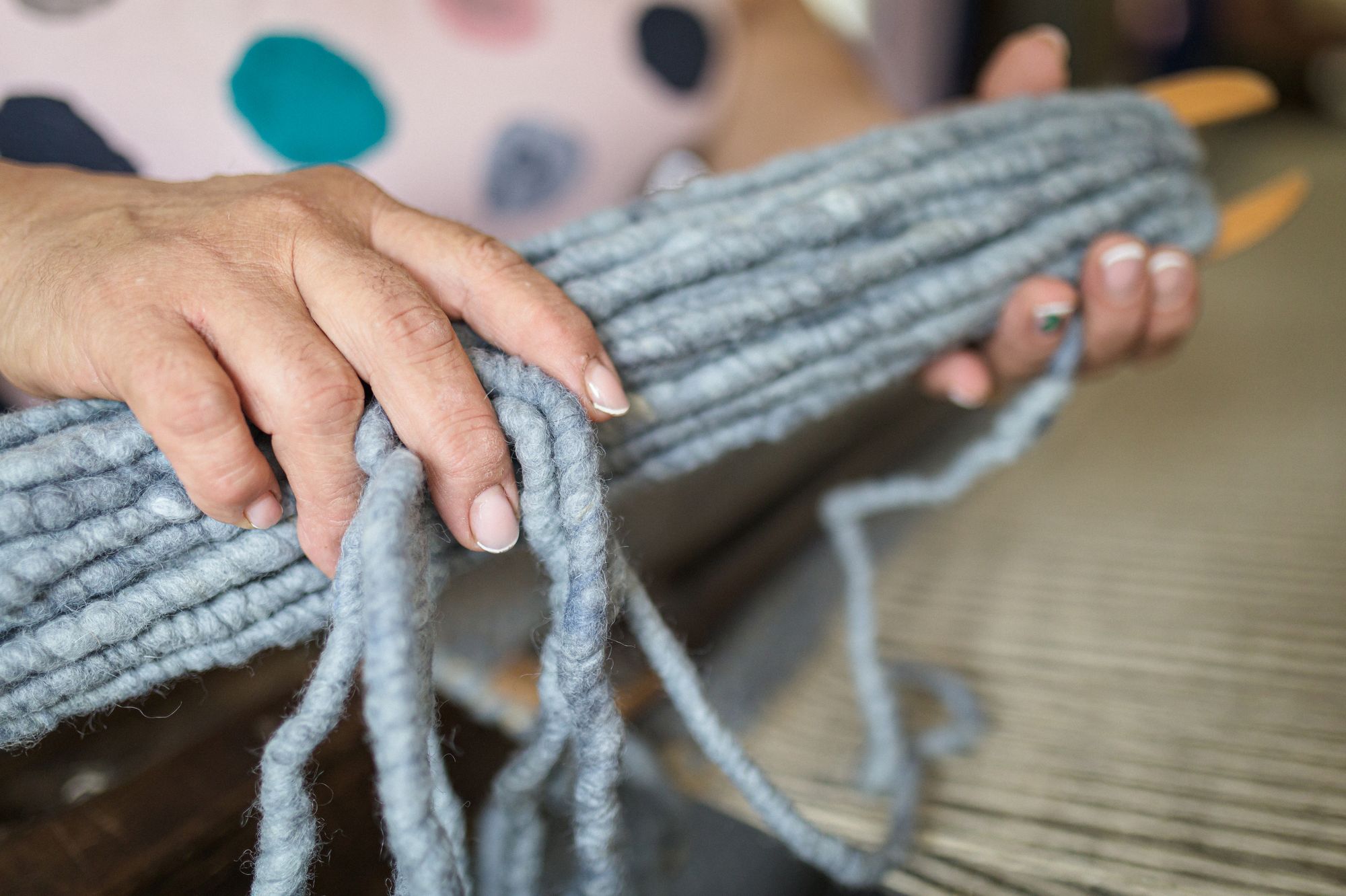
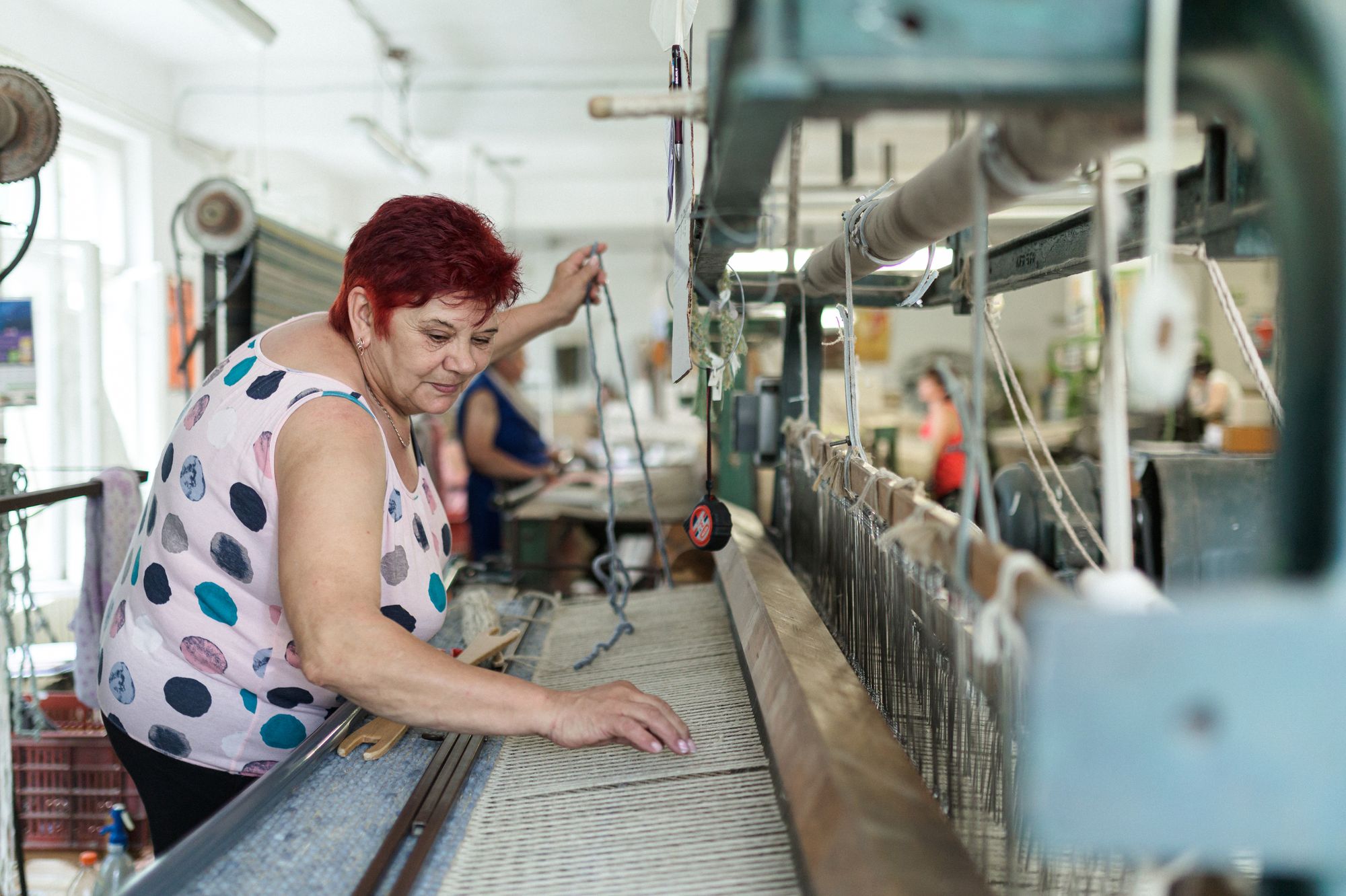
The handcrafted Csaba carpet quickly became famous not only in the Great Plain, but also beyond the borders of Hungary, both in the retail trade and at professional textile art exhibitions. The cooperative employed nearly 800 workers, but the regime change did not spare them either. Although the German Haro factory outsourced part of the production of semi-automatically woven carpets to Békéscsaba, and the Hungarian-born German businessman Ferenc Puskás joined the factory, the manufactory struggled to survive. It was then that Ferenc Papp and his family stepped in, buying up the remaining raw materials and machinery and trying to breathe new life into the factory. In the previous decades, they had supplied a total of sixty-two department stores in Hungary, including Domus, Skala, and Centrum, but the closure of these stores put production in danger. Fortunately, they maintained a good relationship with their German partners, and today most of the carpets from Dévaványa are still made to their orders.
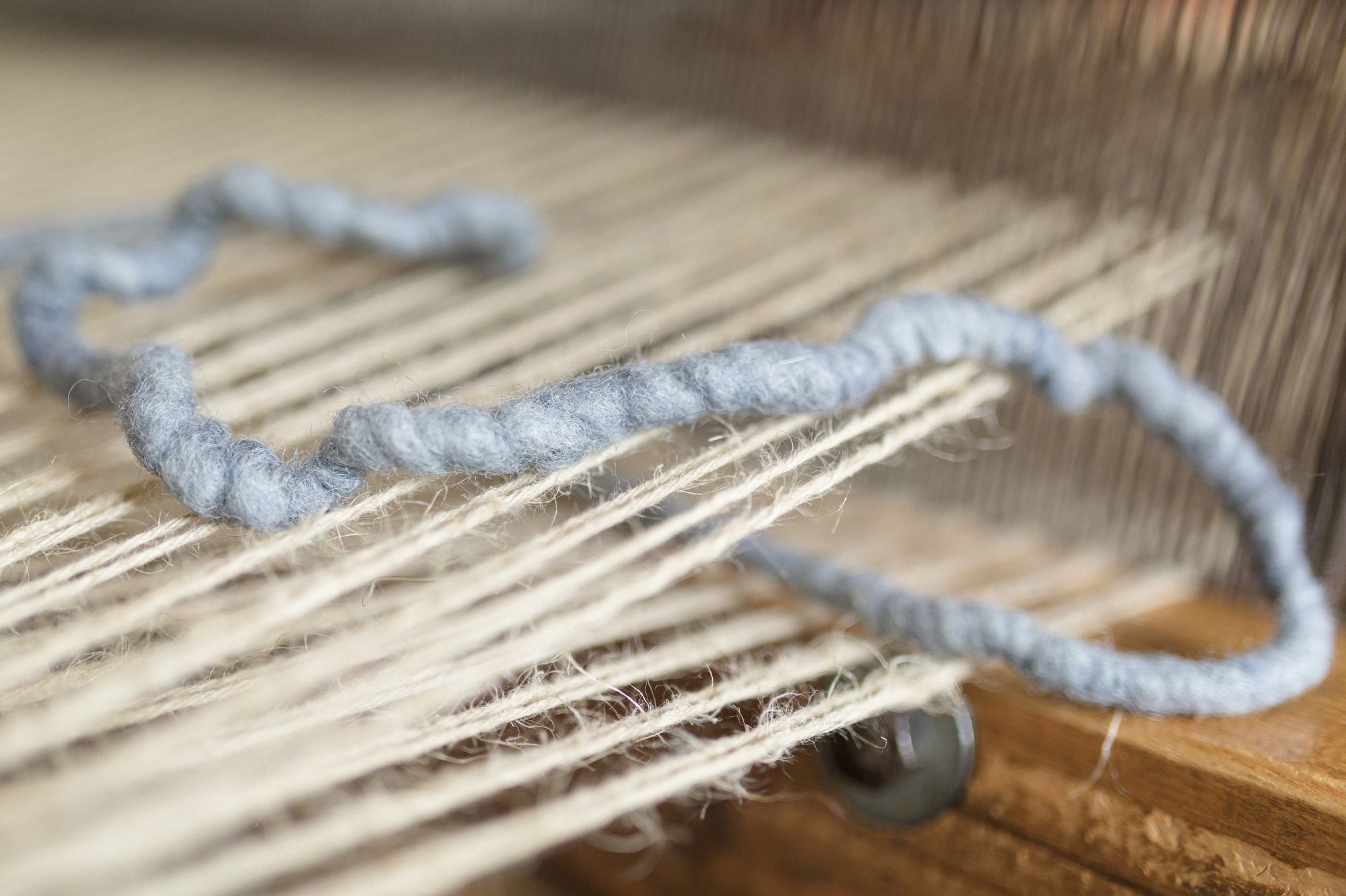
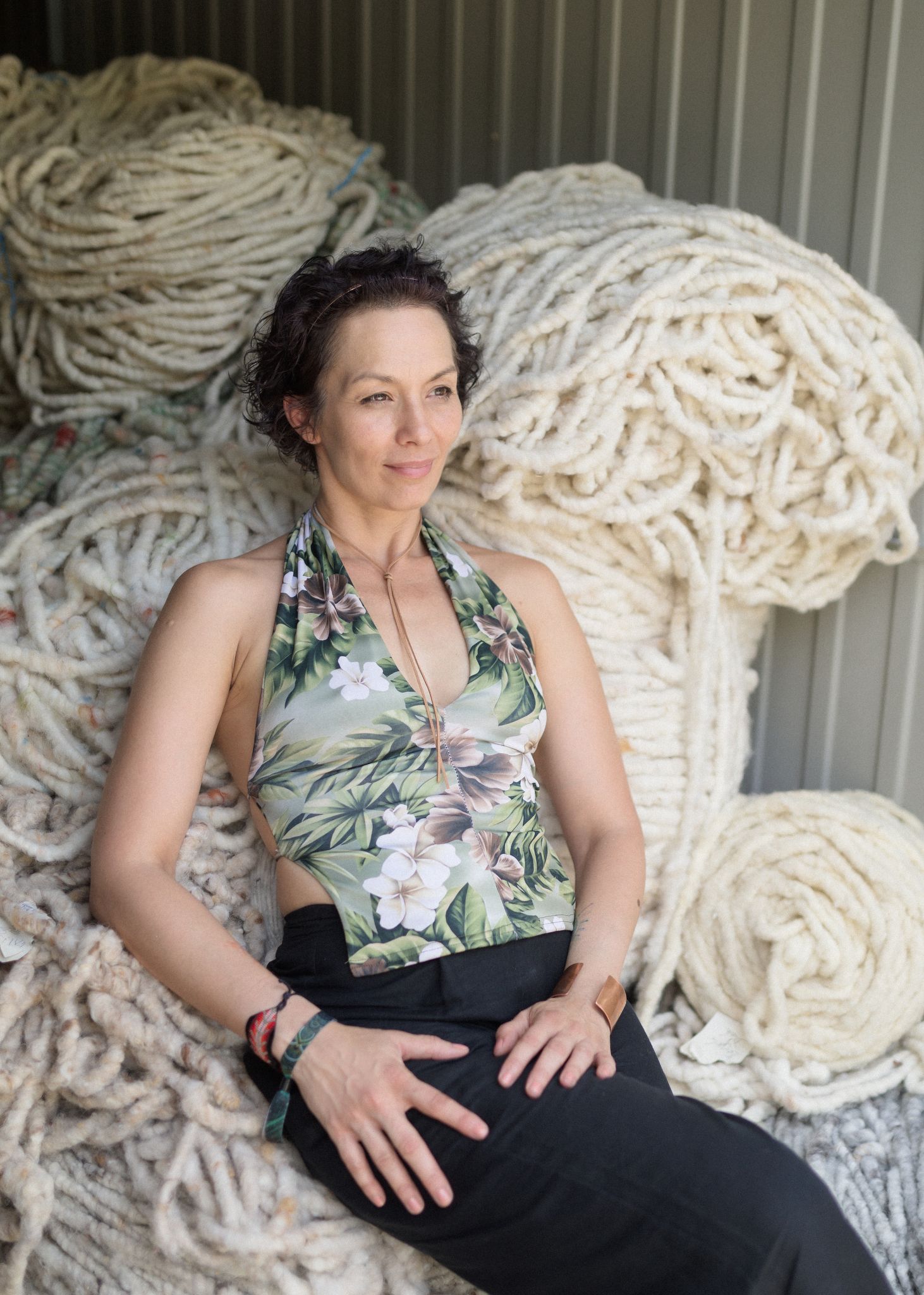
It is not an exaggeration to say that Anikó Rácz, the founder-designer of Hannabi, has gone to the ends of the Earth to find the right partner who would help her realize the carpets she dreams of. Although Hannabi is best known for its minimalist-style sofas, there’s plenty to discover in their repertoire, especially these days: Anikó is now focusing not only on seating furniture made to centimeter precision, but also on home accessories—made by other local designers, but in line with Hannabi’s philosophy—that make the surroundings of the sofas even more homely (read more about this here—the Ed.).
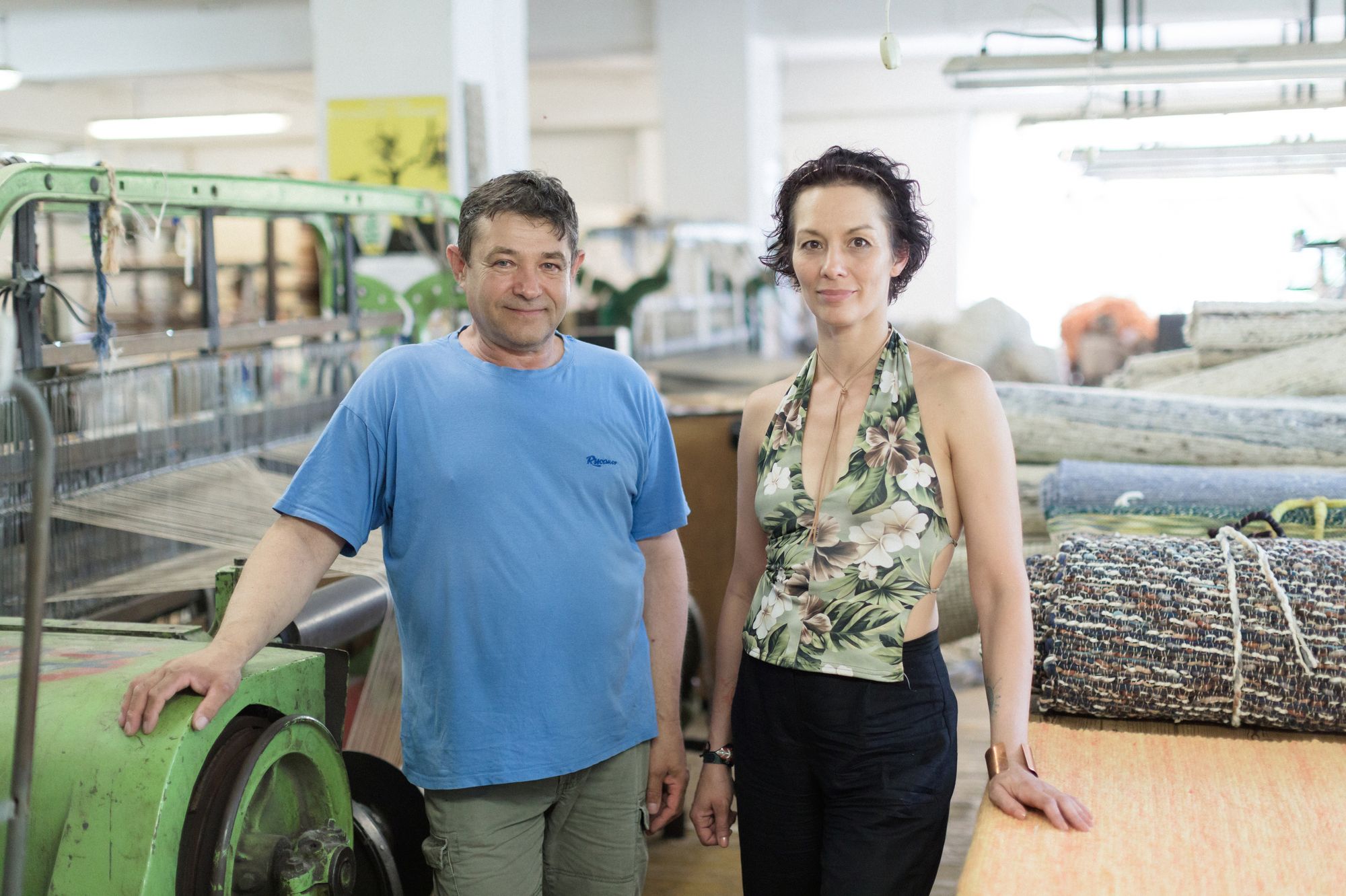
Anikó has always believed that there is a place for small-scale handicrafts made with care and love and that it makes sense to challenge large-scale production, provided you can find a reliable partner with whom you can dream up the pieces you want to make. The Feries’ factory was recommended to her by an interior stylist friend about five years ago—and that’s how the brand’s “NANA” carpets were first created on the looms in Devavanya. The Japanese-style wool carpets, reminiscent of tatami, are durable, easy to clean, and show the true natural beauty of the material.
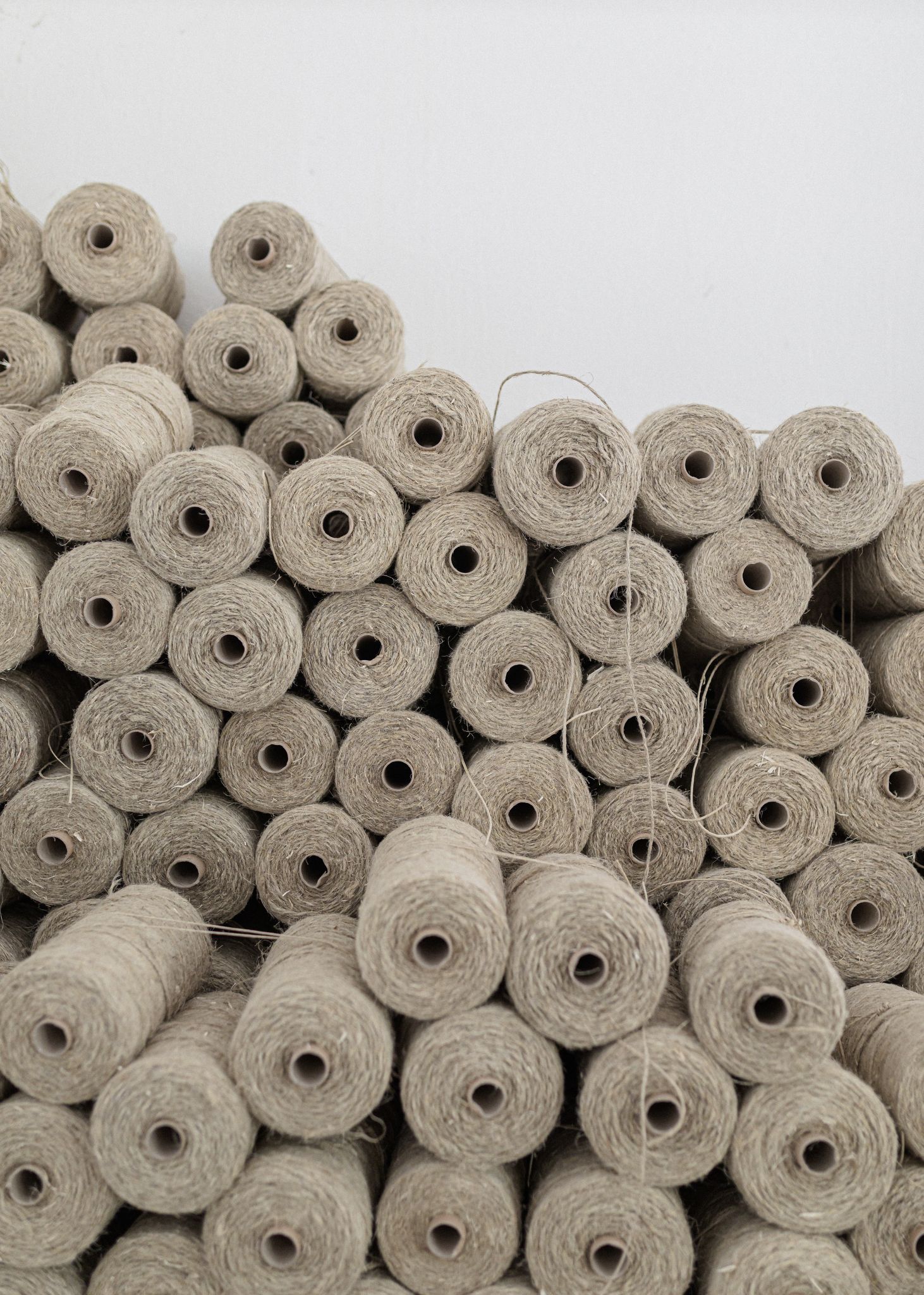

In one of the factory’s buildings, nearly a dozen weavers are hustling and bustling: some are winding the wool yarns that arrive in piles and loading them onto wooden forks for the other workers; others are checking and cleaning the finished carpets at the end of the process. From 7 am to 4 pm, the centuries-old machines clack almost non-stop: their advantage over automatic machines is that these looms are gentle on the material, not pinching or stretching the fibers, so the finished carpet retains the elasticity of the wool—stroking one is like stroking a soft, fluffy lamb.
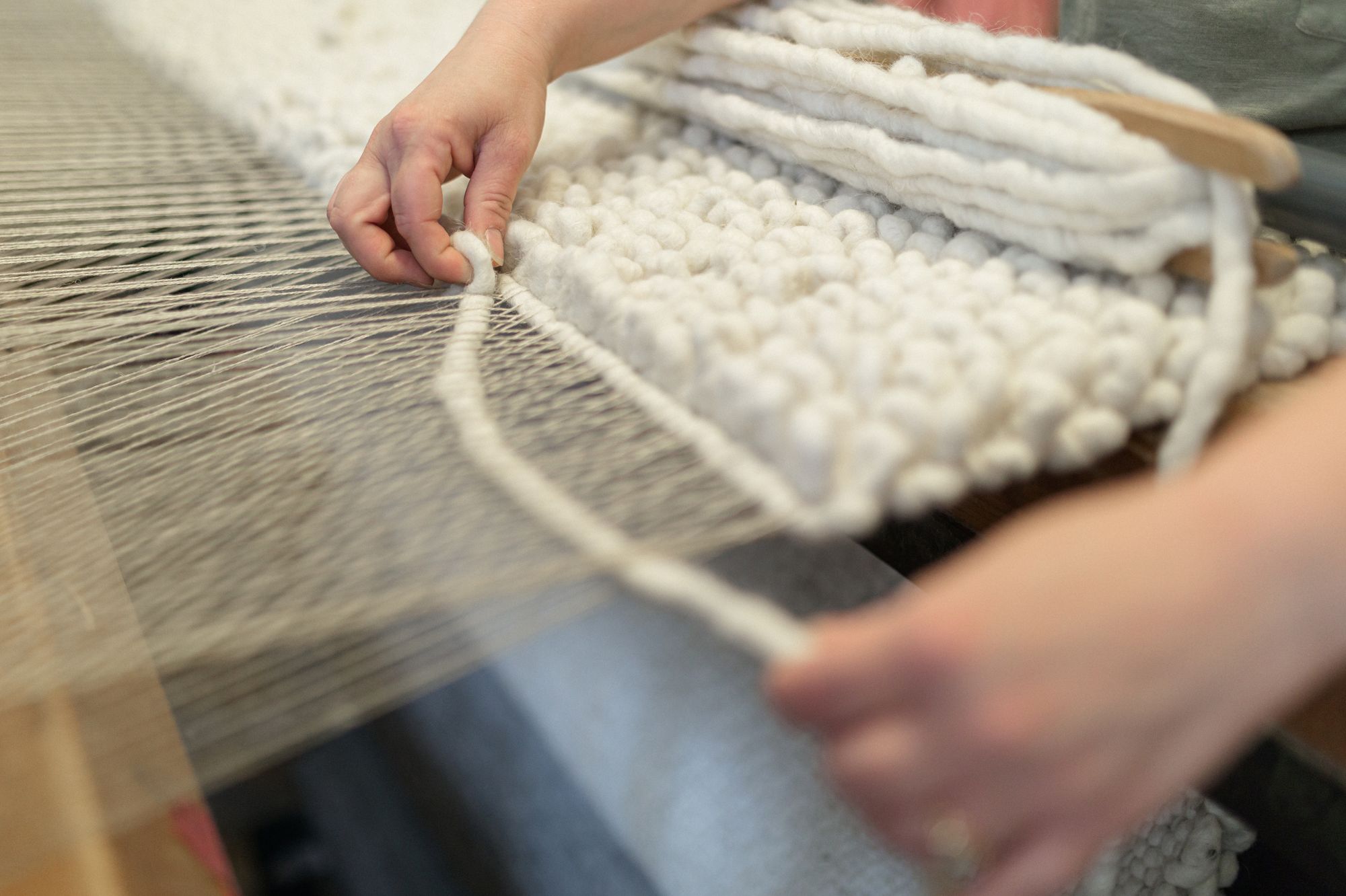
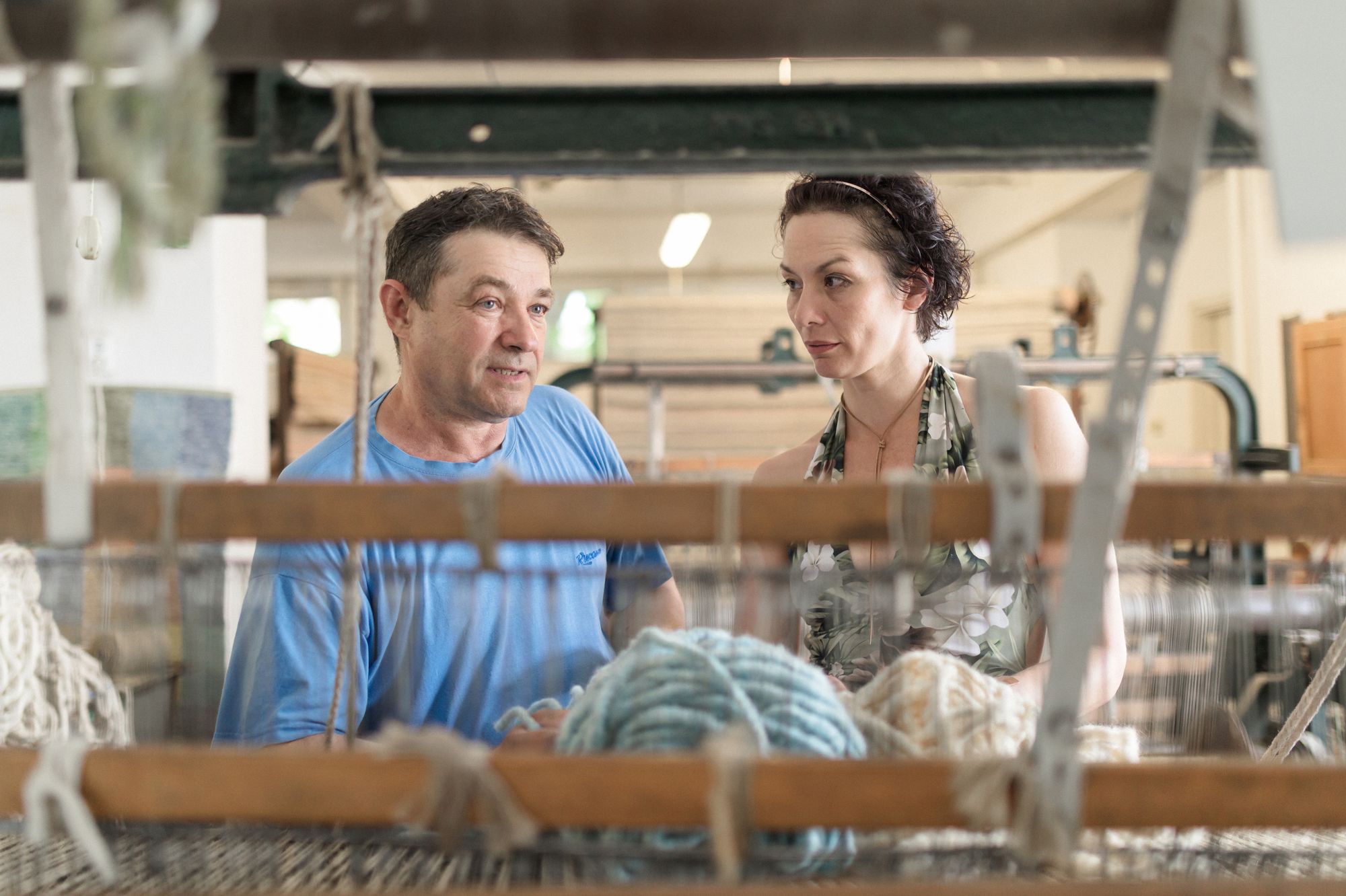
Here, women weave up to four or five hundred square meters of carpets a week, with about twenty square meters of the simpler versions being made in a day. Older and younger people alike can be seen at the looms, with some whose mothers used to work here too. The Papp family currently employs eighteen people—the atmosphere is very homely. Just recently, for example, they celebrated the 50th anniversary of Emília Bácsi Sándorné, who has been working at the machine every day for 50 years (and was awarded the ARANYVILLA Lifetime Achievement Award on the occasion of her jubilee).
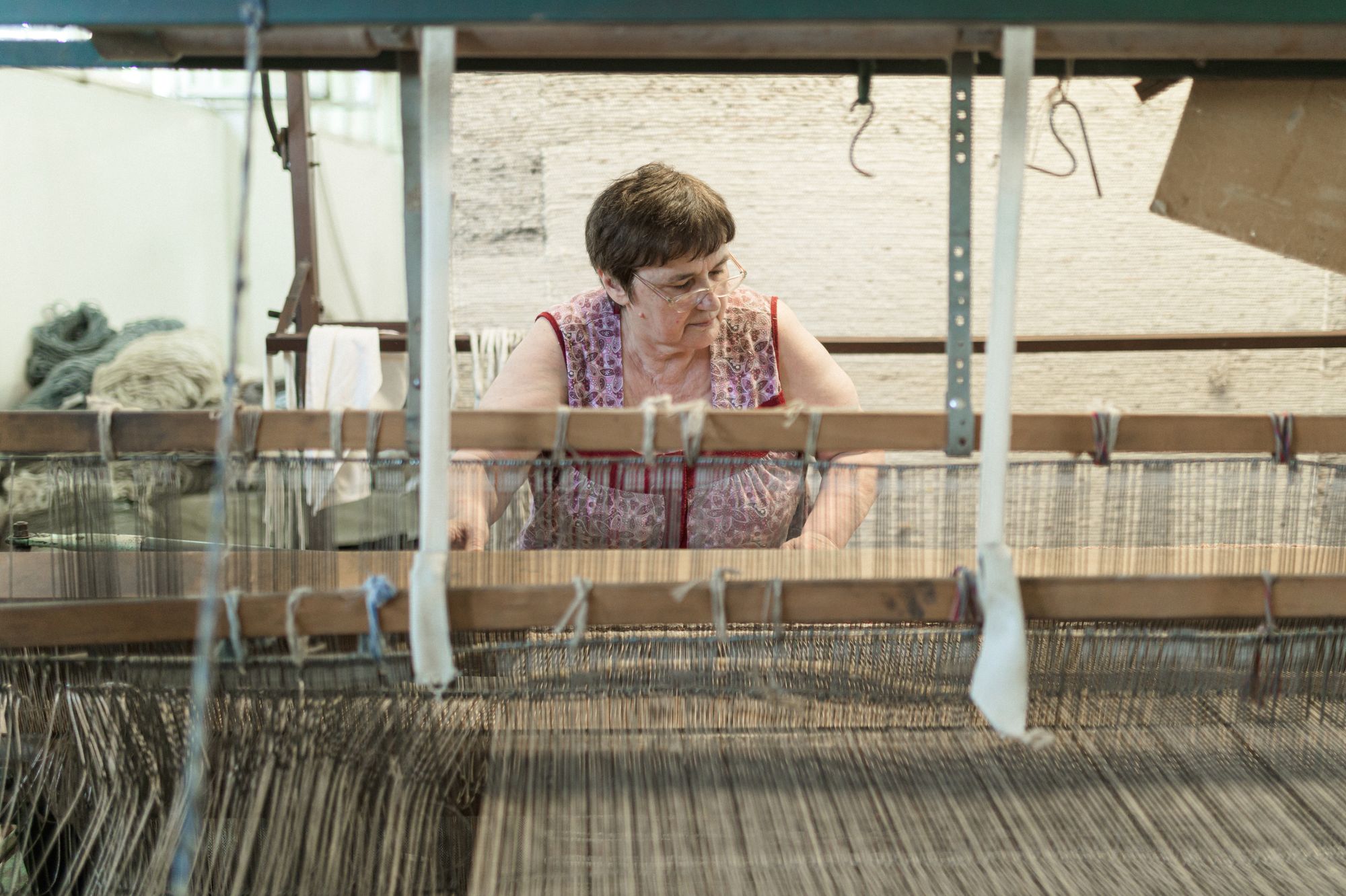

Although the majority of the products of the Dévaványa factory are made for export, fortunately, there are other Hungarian designers besides Hannabi who have recognized the expertise of the Papp family: among others, the carpets of Lili Veres-Veszprémi, Kriszta Vándor, Eszter Révész, Gabi Lőrincz V. are also made here. Csaba Szőnyeg has been in good contact with SZETT (Society of Carpet Designers) for years, so those who attended the 4th Rug Art Fest event recently held in MaxCity could admire the manufactory’s wonderful pieces in person.
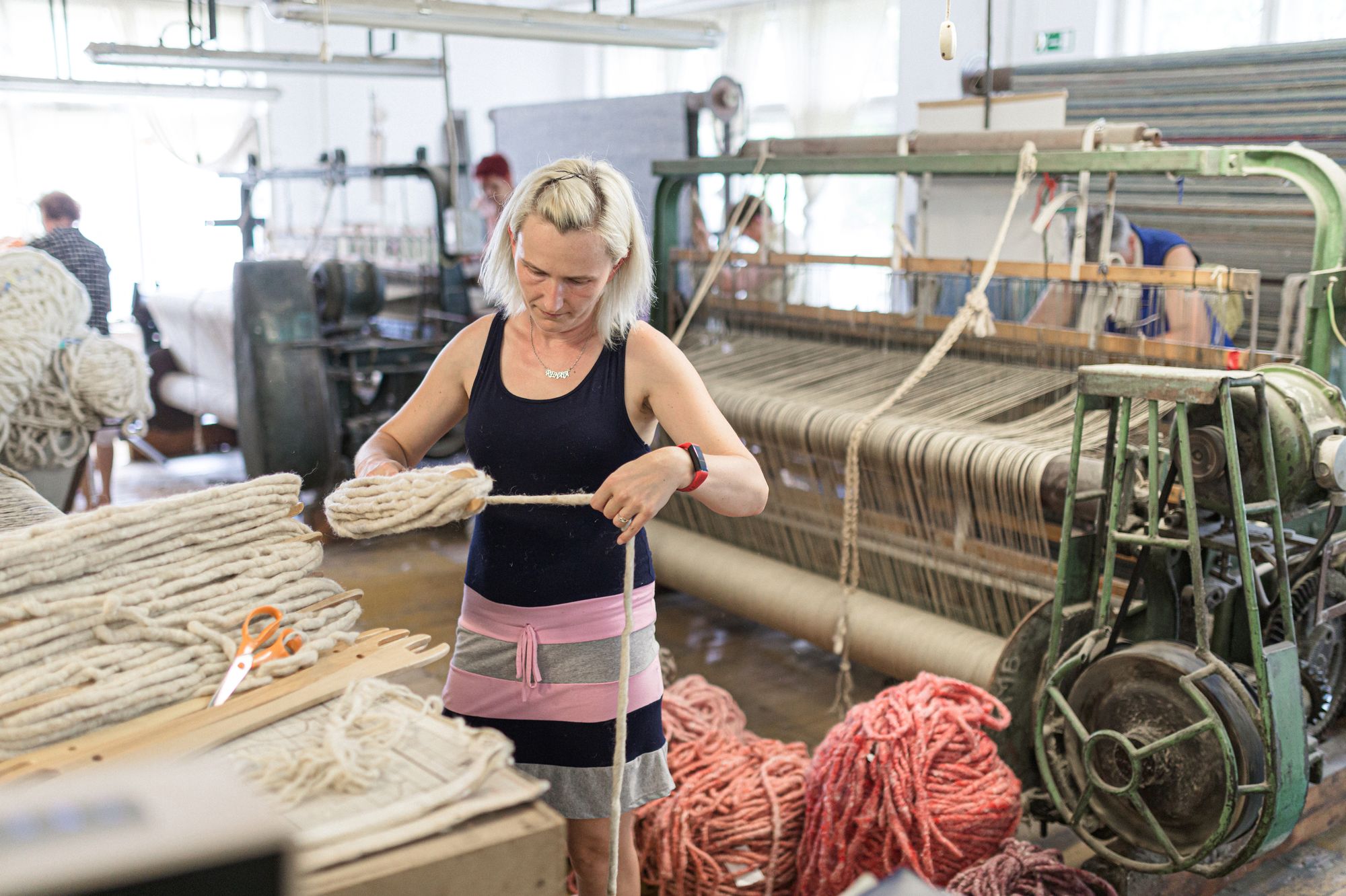
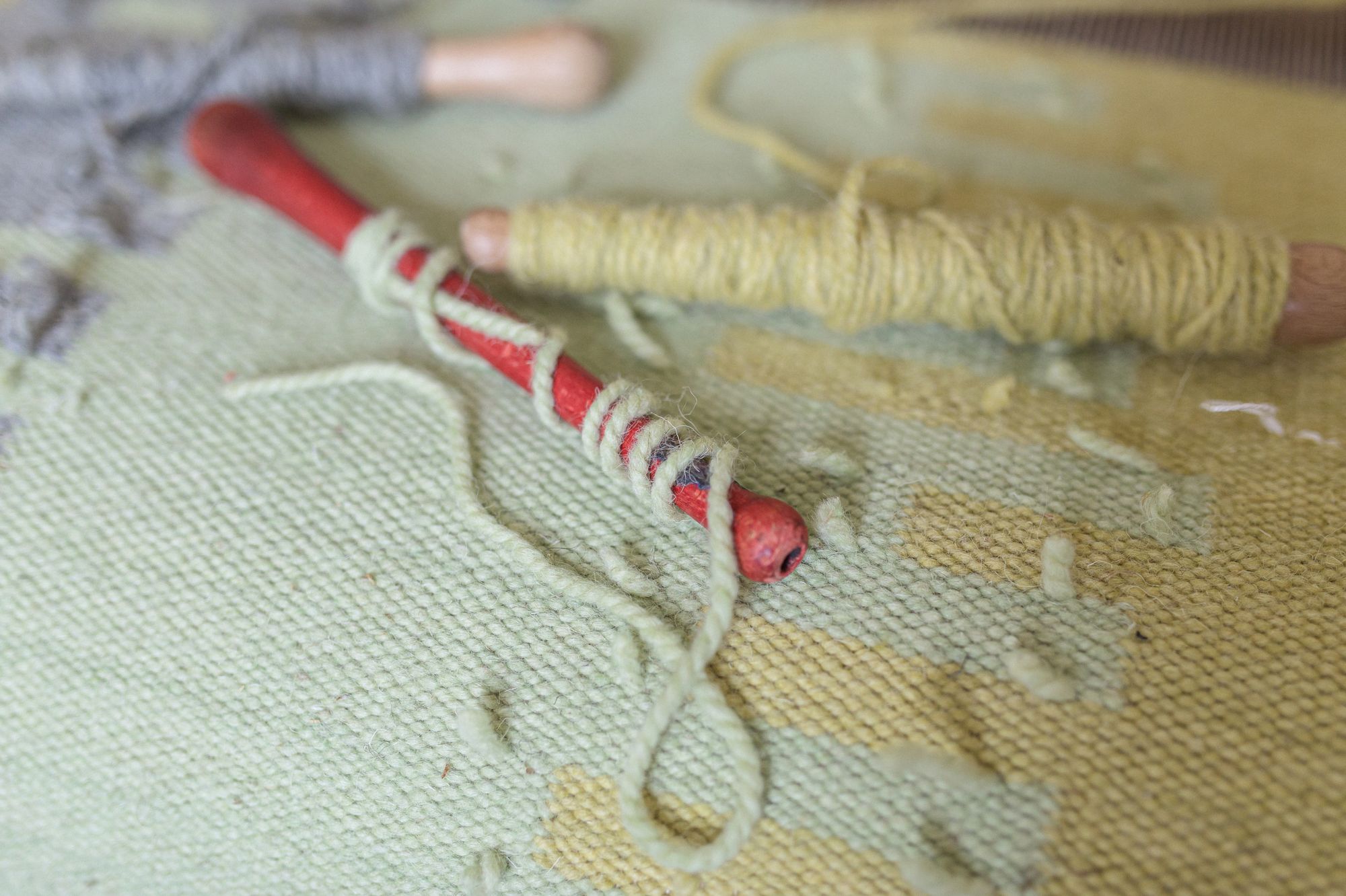
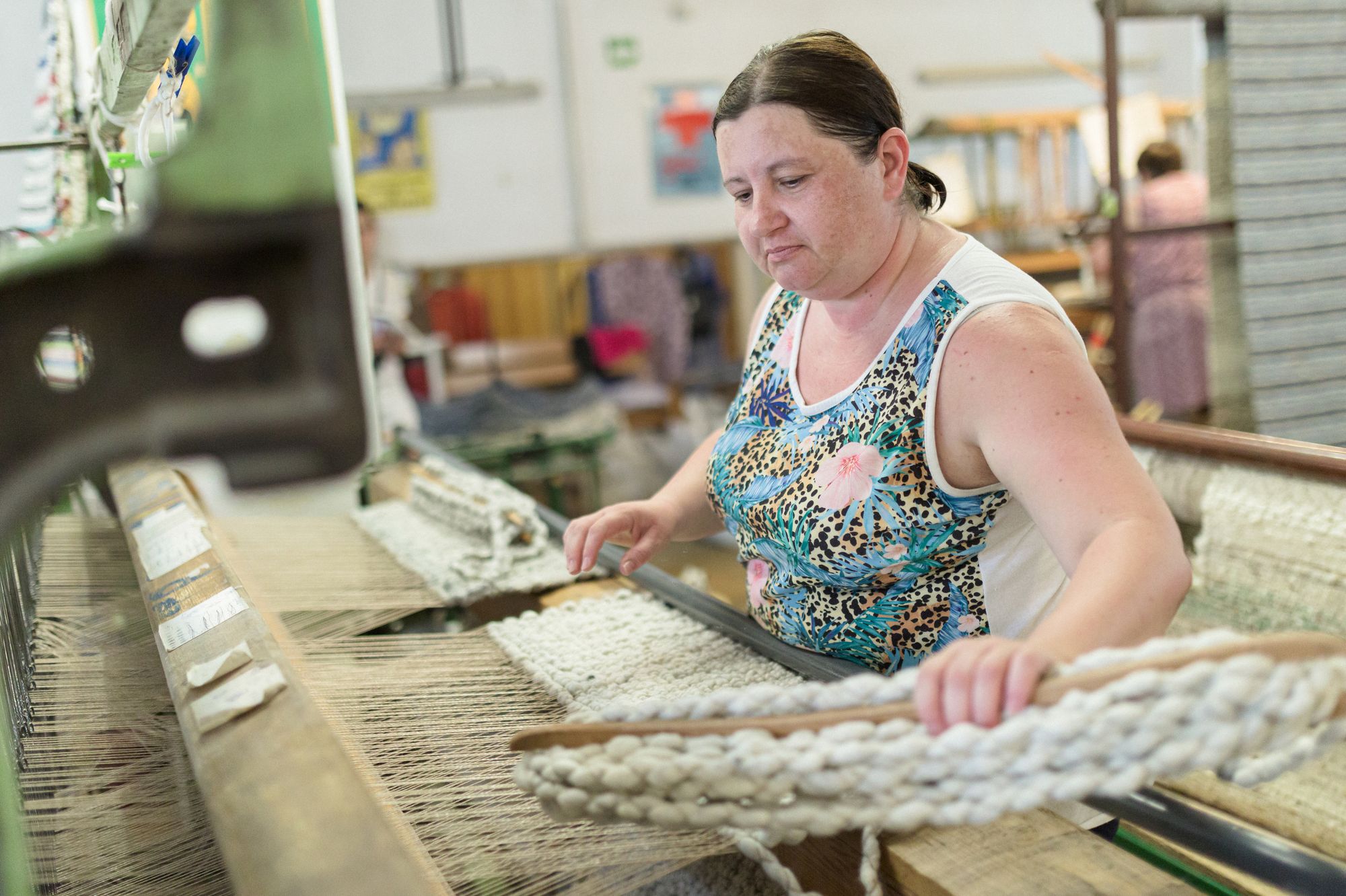
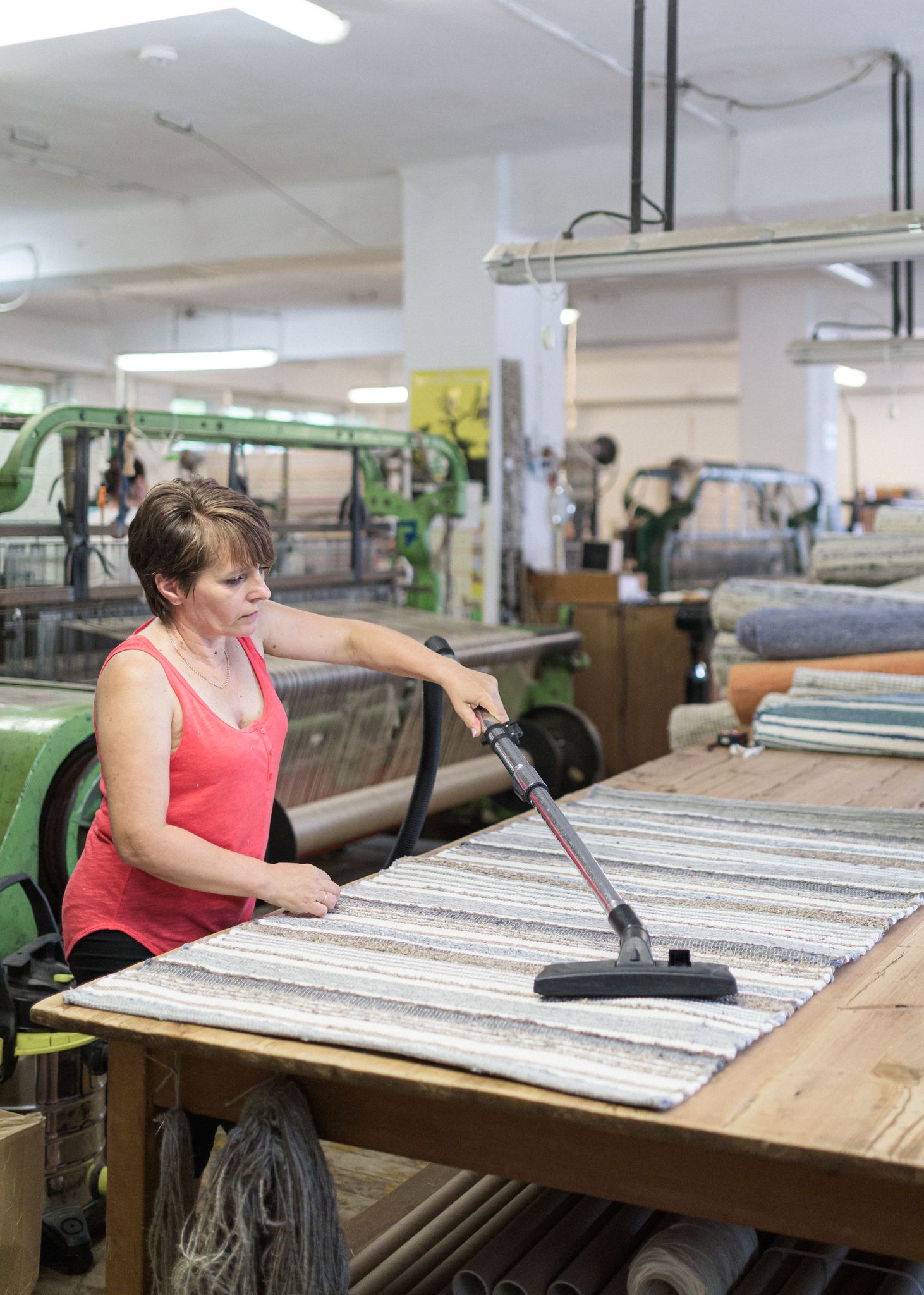
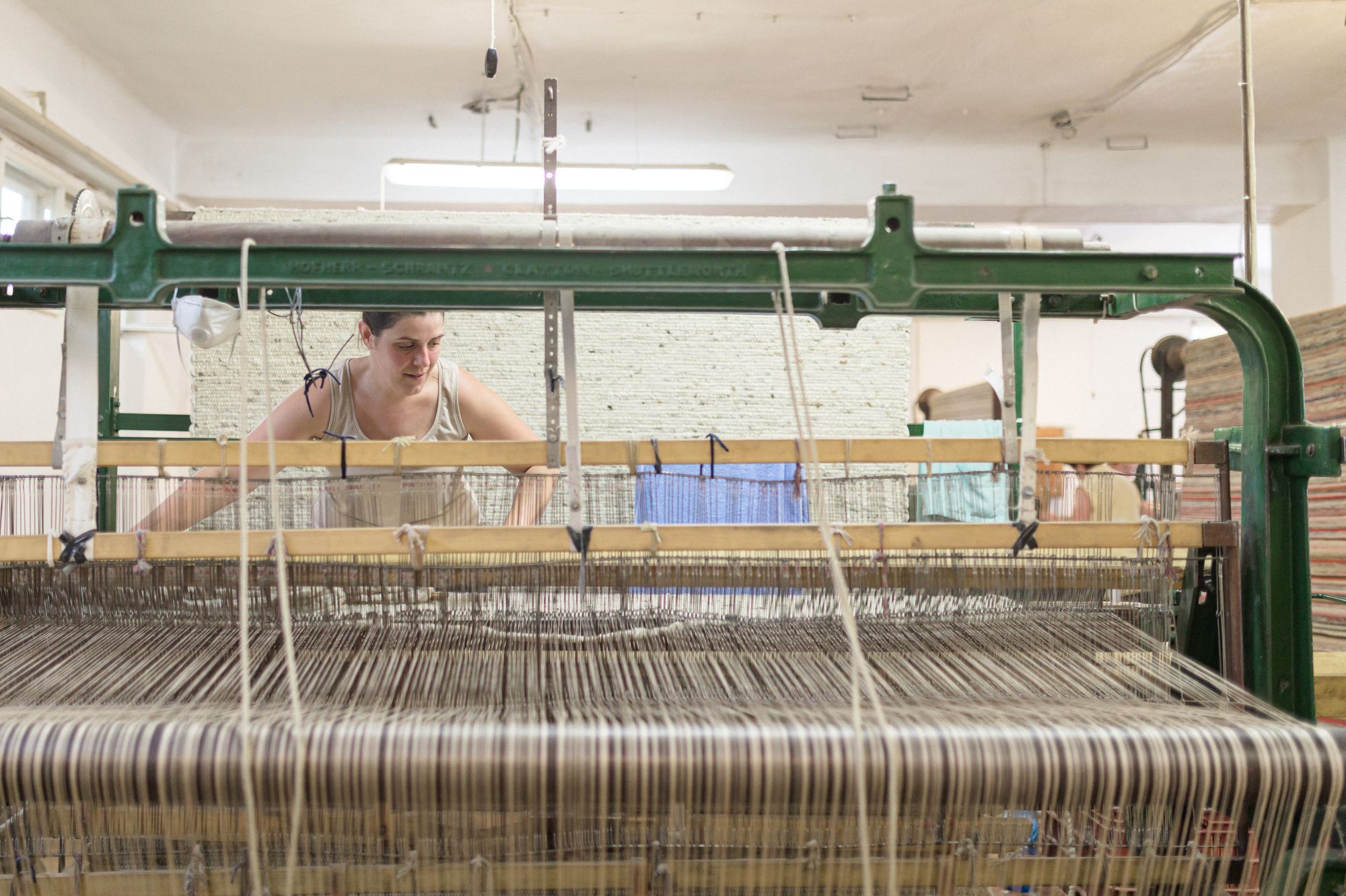
Photos: Balázs Mohai
Hannabi | Web | Facebook | Instagram
Csaba Szőnyeg | Web | Facebook
In our monthly series, we explore where, how and among what circumstances design products are born. There are cases when a designer creates their object themselves, but many times it takes the joint work of the designer and several manufacturers and subcontractors to provide customers with a flawless item. In each episode, we choose a designer from different fields of design and visit the workshops where the actual work takes place.
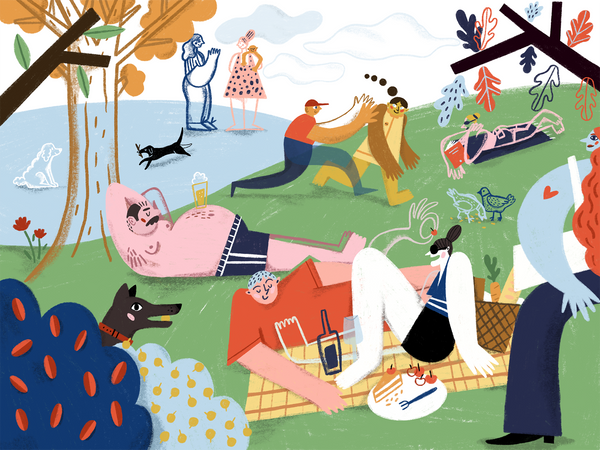
Self-reflection and analytical thinking in Dorottya Kránicz’s works
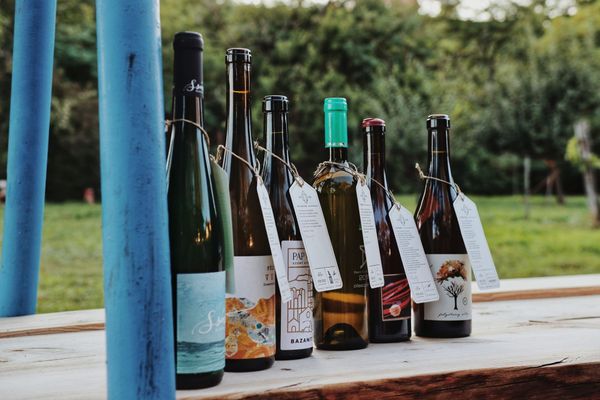
Magnificent pairing: contemporary poems with contemporary wines










